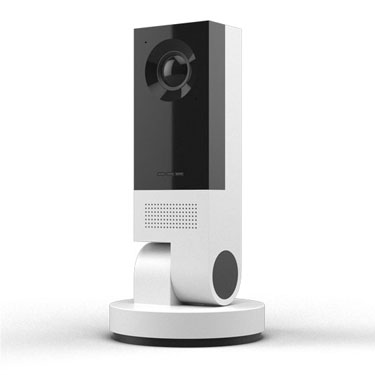
Let’s go through five possibilities that visual IoT development will be bringing to businesses in the future.
1. Big data for mid-sized companies
Vision AI, in short, is the ability for a computer to recognize what it is seeing. In the past, a camera would take a photo or send a video feed to a server, then a software would run an algorithm on the captured images to determine what’s going on. This isn’t necessarily new, and you’ve probably already seen such tech being used by Facebook to automatically tag you and your friend in a photo or video. However, this most recent development is the first real opportunity to run this algorithm real-time on a large amount of data, as well as generate analytics from it in real-time.
Put it this way: you deploy the specific cameras built for this new software. The cameras are linked to the cloud, the same as all of your digital signage, kiosks, and point-of-sale devices. The cameras are able to recognize what customers are doing, how long they spend in certain sections of the store, how often they change their minds, and the time it takes to convert, all in real time. If the cameras see that customers are indecisive in one section of the store, it can tell the digital signage to offer a coupon and for the POS system to apply it, all without needing anyone to manage it. You get the ability to utilize powerful analytics and apply solutions, all in the moment.
2. Retailers won’t worry about overstock nor selling out – ever
Leading from the previous point, a more ambitious IT team can create a self-managing inventory management system. Cameras can keep visual inventory, and the POS system can verify when the item is purchased, saving employees the hassle of doing inventory or checking stock. With the analytic capabilities the cameras can apply locally, the AI can learn to predict when an item will likely go out of stock, and send a signal to the manufacturer when it predicts a shipment is needed. The more data it gathers, the more accurate its predictions become, and it can update its algorithm on-the-fly as trends evolve. The cameras won’t be basing decisions on best guesses, they base it on real data, allowing market analysts to focus on what’s next rather than what’s needed.
3. Improving conversions moment to moment
While POS systems can do a great job in gathering data on consumer behavior, offering consumers coupons and discounts for things that they buy, what’s more important is what they didn’t buy. Indecisive customers may spend a long time in the electronics section looking at TVs on every visit, but never buy one. Another customer could look through a menu for ten minutes, only to order the same thing they always eat.
Visual AI is able to recognize this behavior, and can have them receive an email in the store offering a coupon on that same TV they want, but never have the courage to buy. If a restaurant-goer spends the entire time looking at the steaks, but always goes for the burger because it’s safe, the AI can tell the digital signage near their booth to start showing images of the juicy Porterhouse. Digital marketers have had the same power over their conversions for years, and now it’s possible for brick-and-mortar stores to have the same capabilities.
4. Personalizing consumer experiences
It’s easy to imagine a video feed watching a restaurant’s tables, and sending out a server with refills of drinks and bread as they are depleted instead of consumers having to flag someone down. However, visual AI has much more potential than simply making sure customers have enough refreshments.
Visual AI is capable of detecting moods such as enjoyment and disgust. With these analytics, a restaurant can put together a profile of what items are popular, and also put together sophisticated customer taste profiles. Knowing what foods one type of customer enjoys can help build a network of related items that customers with similar tastes will probably like. Just like the “Related Items” section at the bottom of a product page online, restaurants can soon start making more complex, and accurate, recommendations, increasing customer retention and average amount spent.
5. Making POS systems even faster
Mobile POS services are already making transactions lightning fast, and AmazonFresh is experimenting with seamless digital wallet technology. But it’s possible that you won’t even need your phone in the future to check out. Facial recognition technology is on par with the human ability to recognize faces, and it’s only improving, down to finest details. Combined with a Customer Loyalty program, visual AI can tell when a specific customer enters a store, what items they choose, and when they leave, simply charging the account they have on file. This technology exists already in a similar way, but facial recognition is certainly more secure than basing it solely on a mobile device, a level of authentication as unique to each of us as, well, our face.
What’s in the immediate future
It’s true these concepts have a long way to go before they are standard fare. However, it’s also true that versions of these ideas exist in a less powerful form already. People counting can give you powerful analytics, even if not real-time. POS systems can track inventory as transactions occur, as well as use mobile devices for efficient checkouts. And kiosks in restaurants can be used to order refills and rate menu items, and sessions being used to determine correlated ratings. So while you might not be on the early access list for Qualcomm’s visual AI toolkit, you can still modernize your IT systems with today’s technology. Check out some of the creative possibilities here.